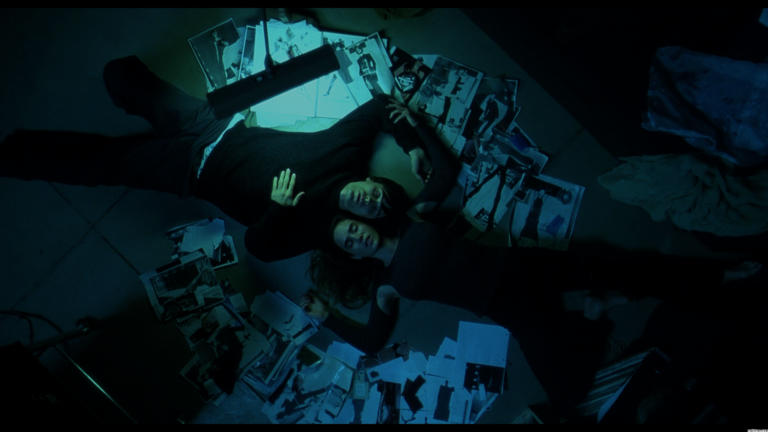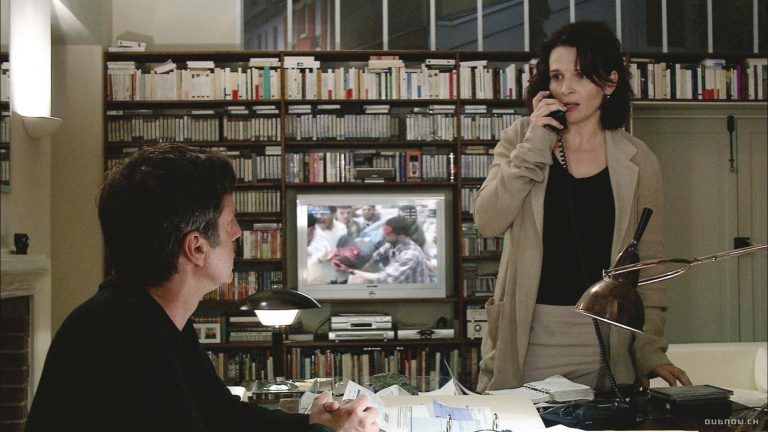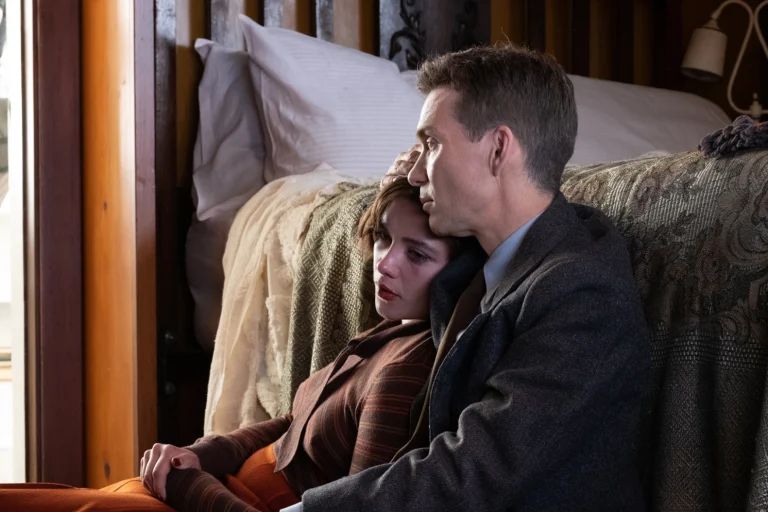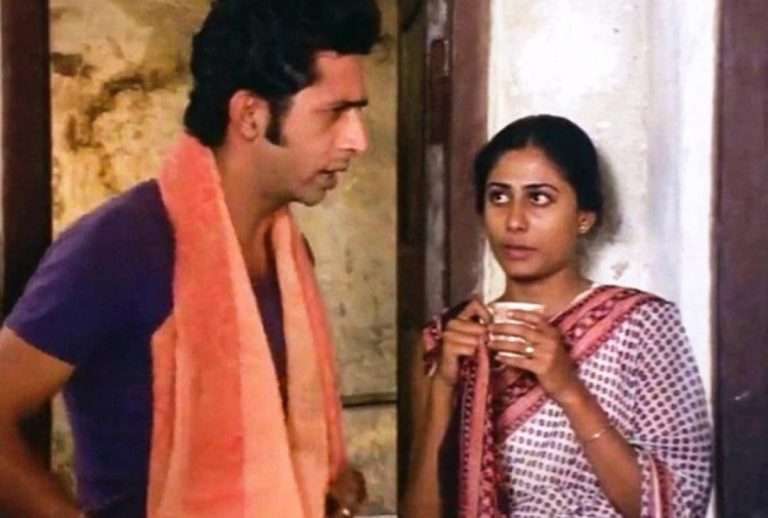The term LGBTQ has gained significant importance in the academic parlance, too. The glimpse of lesbian life and the transgressive desires of women on screen through the Malayalam films often questions the moral and societal frame. “Sancharram” (“The Journey” 2004) tells the tale of a lesbian relationship that ignited between two female teenagers who have known each other since their childhood days. The story unfurls the life of Kiran and Delilah, who decide to break the shackles of religion, sex, and gender for the sake of their love for each other. Although homosexuality is perceived as an aberration in society, the film boldly addresses same sex love, and how grounded sexuality is in the daily ways of life.
The film, directed by the Indo-American director, Ligi J. Pullapally, is a path-breaking film focusing on the travails and traumas of love-making that is forbidden or ‘abnormal’ in a heterosexual society. Albeit the movie revolves around the motif of lesbian love making, it hints at issues like gender, body, sexuality, male hegemony, matriarchal legacy, religion, etc., existing in the socio-cultural fabric of Kerala. They are neighbours, childhood friends, classmates, and their affection slowly and steadily takes the form of a romantic and sexual bonding.
The two childhood friends, Delilah and Kiran, are attracted to each other. Delilah is lively and mischievous, whereas Kiran is a potential poet with a quiet temperament. Kiran returns to Kerala with her parents to live in her ancestral home, and Delilah is shown as her neighbour, who is a visible presence in Kiran’s daily life. Their affection gradually takes the form of love, although Delilah does not accept it at the onset. Though Kiran loves Delilah deeply, she is hesitant and scared of expressing her feelings.
Rajan has madly fallen for Delilah, and he is unable to express his feelings to her. He discloses his love for Delilah to Kiran and takes her help to know her likes and dislikes. He, in fact, asks her to help him by writing love letters for Delilah. This act of writing love letters to Delilah is an expression of her repressed and romantic feelings untold hitherto. Later on, Delilah gets to know that Kiran has written those letters for the beloved she identifies in Delilah.
The lesbian look of exchange and female bonding are vulnerable to the heterosexual structure. The lesbian discourse places the heterosexual conceptualised notions of romantic love in contrast with homosexual love. The movie, for instance, depicts a scene in which Rajan and Kiran are looking at Delilah standing in front of her courtyard. Rajan and Kiran are standing outside the wall of the house, and both are gazing at Delilah. Moreover, it is Rajan who informs Delilah’s mother about her ‘abnormal’ relationship with Kiran. This scene can be read as Rajan’s vengeance for Kiran, as she is the one chosen as lover by Delilah over Rajan, who badly loves her.
Also Read: 35 Best Malayalam Movies of All Time
The failure of a ‘normal’ love affair between their classmates, Sabiha, a Muslim girl, and a Hindu boy, is also exposed in the film. Their elopement is not accepted by society as they created shame for both families. Although Kiran wishes to play football, her father dissuades her by saying, “Playing with balls is only for boys”. When the teacher asks Kiran regarding the content of Sugathakumari’s love poetry, she answers it as the loneliness of love and the hell created by it. In a way, it reveals Kiran’s inner conflict of her love’s intensity and the loneliness emanating from it. The film also discusses the inescapability of male-female unions prevalent in society.

There is an absence of public spaces in the film. The whole story travels through the confines of the homes, courtyard, school, pond, and their scenic-cum-romantic ambience. On one side, there is Kiran’s ancestral home boasting of the grandeur of the matriarchal ancestry, whereas on the other side, there is Delilah’s home where she is accustomed to becoming a woman and wife. Even though her grandmother senses Delilah’s relationship with Kiran, she does not treat it as abnormal or try to keep her from that, unlike other family members.
Kiran lives in the bâhir (outside), as she makes phone calls to her uncle from a telephone booth, pawns her jewelry and makes money, purchases clothes from the town, and courageously ventures into Delilah’s room on her pre-wedding night to call her to lead a life with her. Delilah even says to Kiran, “There is nothing more between us.” Kiran and her masculine disposition represent her domain over Delilah, her submissive and womanly counterpart.
The social structure is still subjected to the structured normative patterns of heterosexual society. The intricacies of female bonding are not accepted or welcomed in a hetero-normative domain. The climax of the movie signifies the dependence of the queer factors towards the non-queer factors. Delilah is forced to go back to the normative structures of the sexual identities and duties ascribed by society. Kiran comes out of her female assertions by cutting her hair and walking forward. She embarks on a new journey of self-discovery without the fear and favour of the societal norms.
The very name of the movie, “Sancharram,” denotes journey. It is a journey in search of ‘fresh woods and pastures new’; a journey to discover one’s identity and independence. Still, Kiran confesses that she can’t marry anyone else, and she will find their share of happiness somehow. Delilah runs out of the church, whereas Kiran keeps on walking after having cut her hair. It’s time to start afresh, a new journey in both their lives. The movie at the outset introduces a fortune teller who predicts that Kiran will love early, and it will be as strong as the bond between Shiva and Parvati. She exhorts: “Above all, know thyself! Without which in shadow dwells all else, Lord Muruga!”. The movie ends with the unruly laughter of the fortune teller watching Kiran.
Kiran’s mother strongly holds the view that women are the guardians of tradition. “ Once your children will also be born and brought up here, our tradition will continue through you”. Her mother’s words echo the obligation of a daughter in continuing the family heritage. Our society is too harsh on women, especially if they break stereotypes. Society has rules for a reason. In spite of all the scientific and technological advancements, we survive in such a society where the needle of the watch decides the character and morality of a female.
“Sancharram” hints at the reality that women should never be downgraded as the “weaker” or “fairer” sex. Despite the role of wife or mother, they too have a life which is often rejected by the patriarchal hegemony. Trying to manage a home is not child’s play at all. Many women find better counterparts in women themselves. They are of the opinion that it is not necessary to find a man always to share the physical, mental, and emotional spaces of one’s life. Homosexuality attained a legal sanction in India. Still, the mindset of Indians is not willing to sanction the desires of same sex. Hence, no age and custom can stale the infinite variety of the inevitable love life of same sex made immortal by the celluloid medium for a message highlighting a clarion call to humanity.






